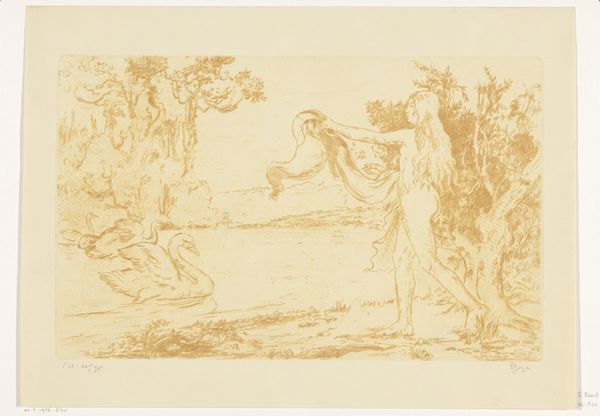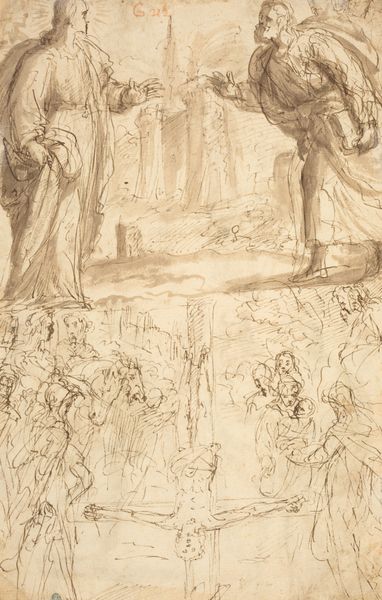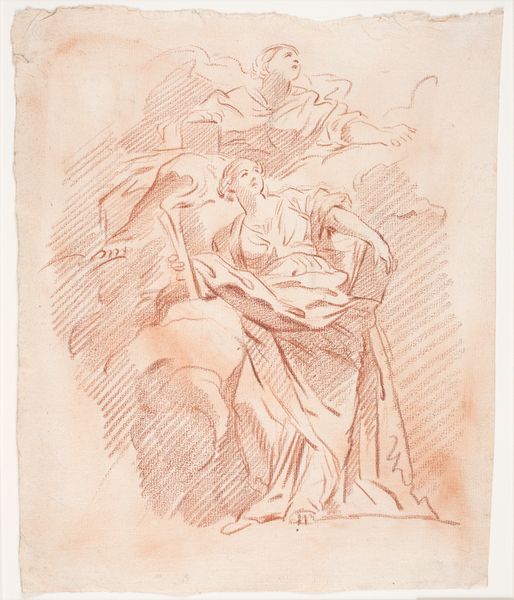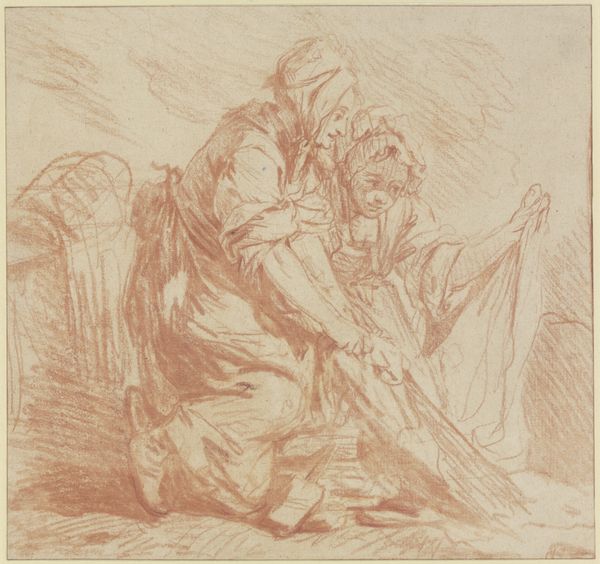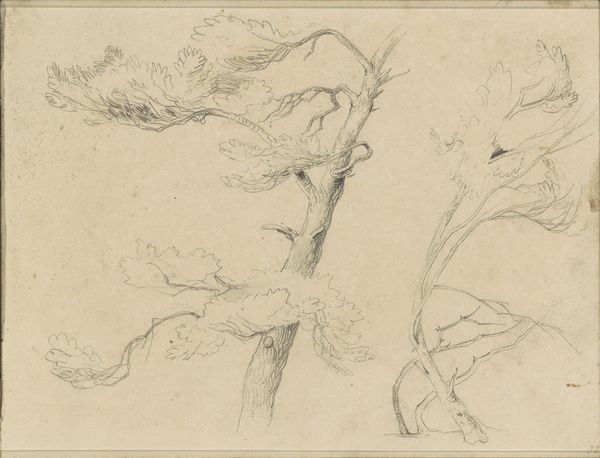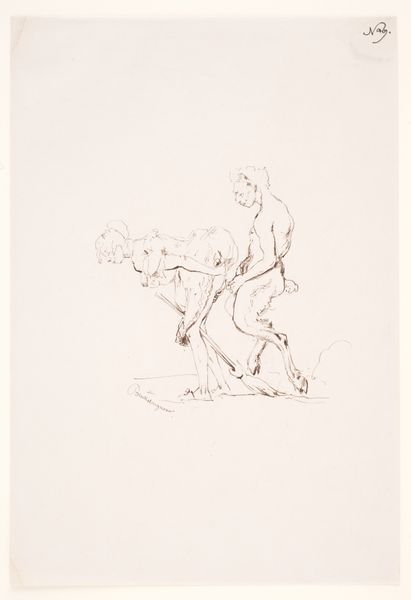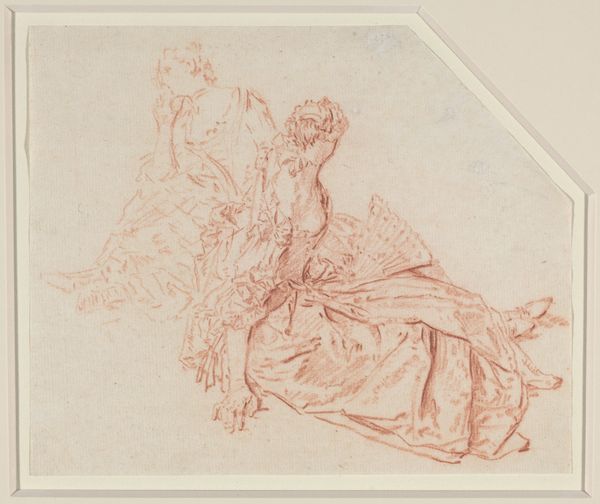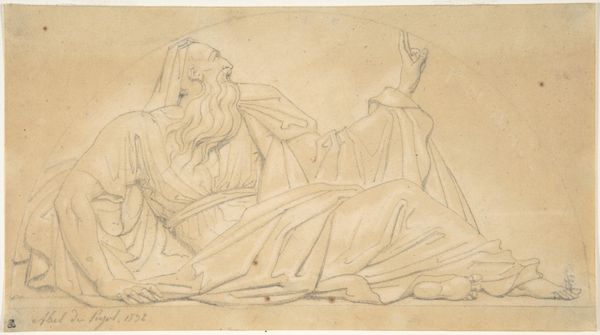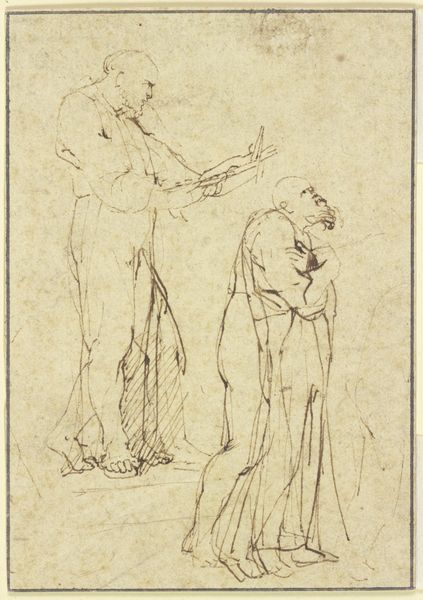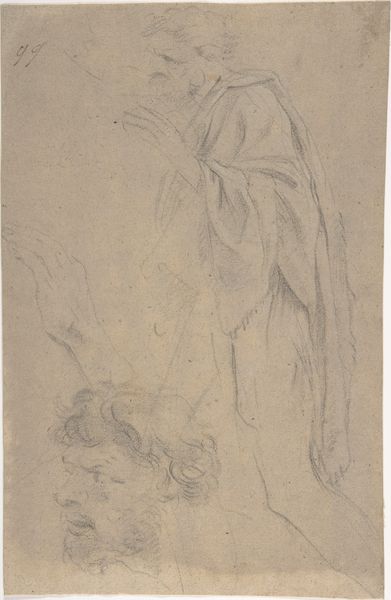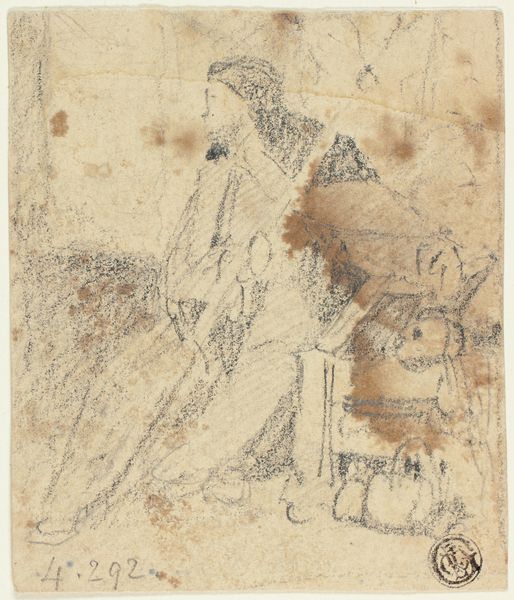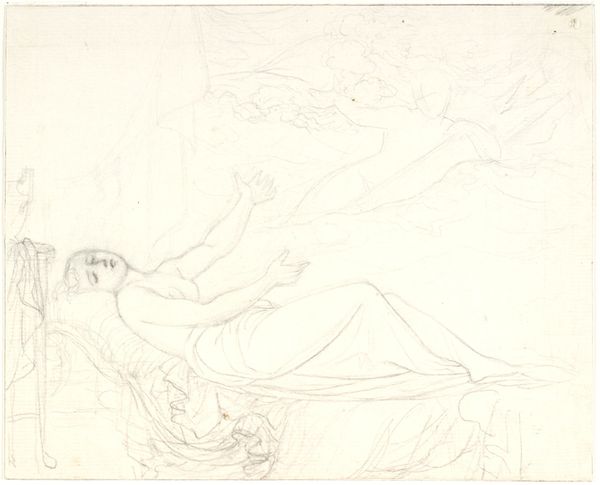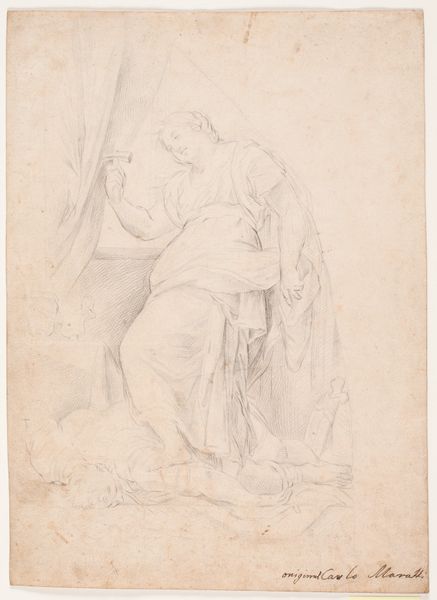
drawing, ink, pen
#
portrait
#
drawing
#
etching
#
figuration
#
ink
#
ink drawing experimentation
#
romanticism
#
pen
Dimensions: overall: 27.3 x 37.8 cm (10 3/4 x 14 7/8 in.)
Copyright: National Gallery of Art: CC0 1.0
Editor: This is "A Magician," a pen, ink and etching drawing from around 1826 by Sir George Hayter. I'm immediately drawn to the contrast between the solid, grounded figure of the magician and the ethereal figures behind him. How do you interpret this work, particularly the magician’s gesture and the figures in the background? Curator: The magician’s raised hand, a classic gesture of invocation, suggests power but also supplication. Think about the weight of symbols! It reminds us that magic, in its oldest sense, is about mediating between worlds. The figures in the background seem almost like emanations of his mind, spirits called forth or visions manifested. Do you think he controls them, or are they influencing him? Editor: That's a great point. I hadn't considered their potential influence on him. Is it possible the artist intended to explore the duality of control and influence? Curator: Precisely. The choice of ink and etching—both mediums capable of creating both sharply defined lines and subtle gradations of tone—mirrors this duality. The defined figure of the magician embodies knowledge and conscious intent. Yet, the blurred figures behind indicate intuition or subconscious impulses. It's the old tug of war we keep seeing between reason and intuition, knowledge and instinct, visibility and invisibility... Editor: So, the incompleteness of the sketch enhances the idea of these unseen forces at work. Curator: Absolutely. Consider, too, the cultural fascination with the occult during the Romantic era. This image becomes a vessel holding the psychological currents and cultural anxieties of its time. Is this a statement of faith or a moment of self-reflection? Hayter might leave the question to you! Editor: I see the cultural weight now! It's more than just a depiction of a magician, but a window into the anxieties and fascinations of the period. Curator: Indeed. Symbols offer a continuous reflection of who we were, who we are, and, perhaps, who we are becoming.
Comments
No comments
Be the first to comment and join the conversation on the ultimate creative platform.
